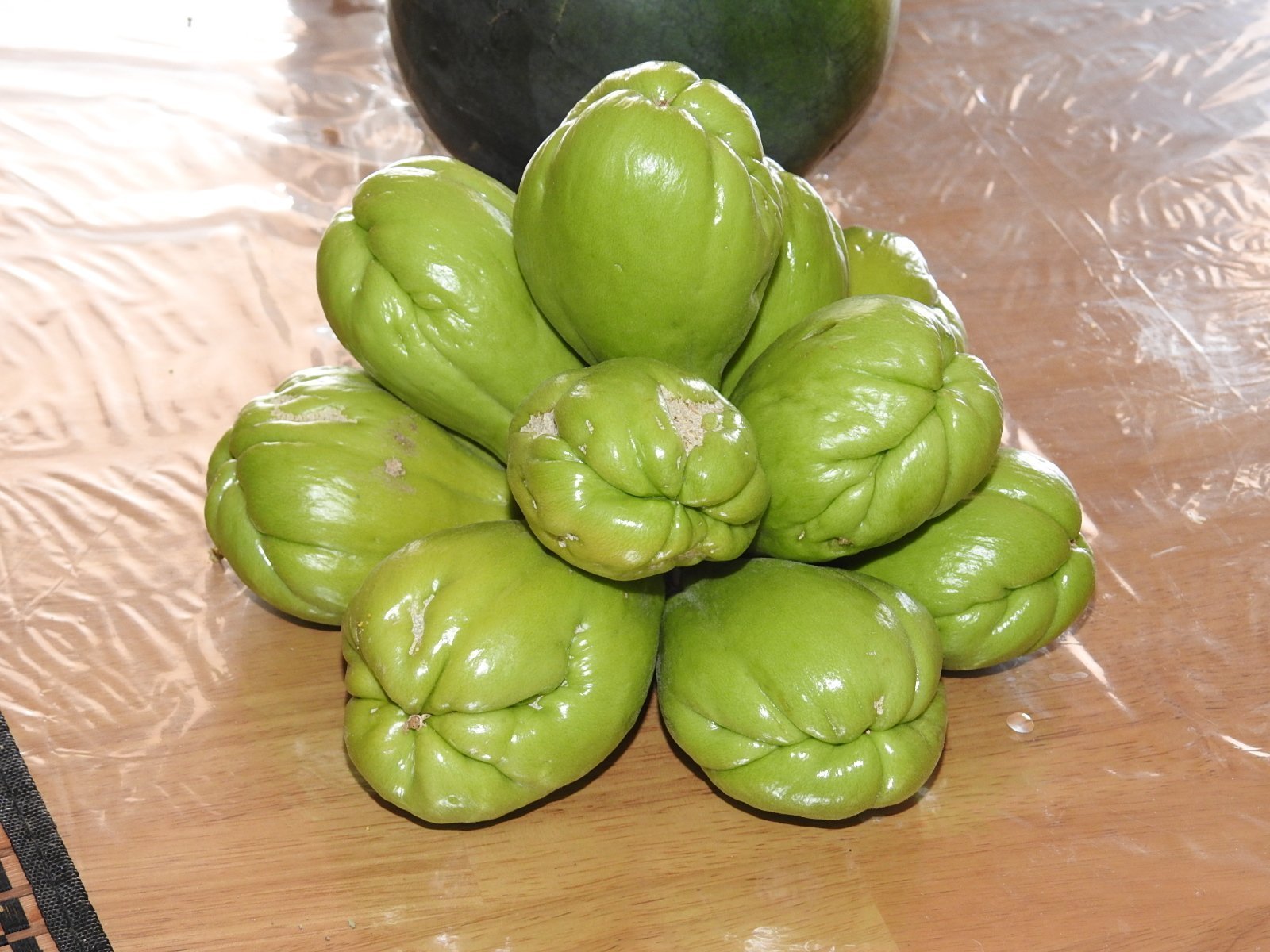INGREDIENTS
This is what you need:
- chayote fruit
from 2013 on
Chayote, also known as mirliton squash, is an edible plant belonging to the gourd family, Cucurbitaceae. Chayote was one of the several foods introduced to the Old World during the Columbian Exchange. Also during this period, the plant spread from Mesoamerica to other parts of the Americas, ultimately causing it to be integrated into the cuisine of many other Latin American nations.
The chayote fruit is mostly used cooked. When cooked, chayote is usually handled like summer squash; it is generally lightly cooked to retain the crispy consistency. Though rare and often regarded as especially unpalatable and tough in texture, raw chayote may be added to salads or salsas, most often marinated with lemon or lime juice.
Although most people are familiar only with the fruit as being edible, the root, stem, seeds and leaves are edible as well. The tubers of the plant are eaten like potatoes and other root vegetables, while the shoots and leaves are often consumed in salads and stir fries, especially in Asia.
The fruit does not need to be peeled to be cooked or fried in slices. It has a very mild flavor. It is commonly served with seasonings (e.g. salt, butter and pepper in Australia) or in a dish with other vegetables and/or flavorings. It can also be boiled, stuffed, mashed, baked, fried, or pickled in escabeche sauce.
Fresh green fruit are firm and without brown spots or signs of sprouting; smaller fruit are usually more tender. Chayote can be sliced lengthwise and eaten using salad dressing dip. The seed is edible and tasty to some when served cold when dipped in dressing.
Chayote is an important part of traditional diets across Mesoamerica, and can be found in a variety of dishes.
MY COMMENTS:
I've grown chayote in my vegetable garden for 6 years since 2013 with varying success.
Despite all the problems with growing chayote in the NM desert, it's still a fun thing to try.
This is what you need:
 Pic1: garden-fresh chayotes
Pic1: garden-fresh chayotes
 Pic2: sprouting
Pic2: sprouting
 Pic5: blooming — 2014-09-11
Pic5: blooming — 2014-09-112017-11-18
There was freezing in the forecast that night. I knew the plants were going to be dead by next morning, and harvested the young shoots, (Pic9) something I had never done before. I tried to root some of those shoots as well (Pic10) but was not successful.
Take only very young leaves of less than 2 weeks old and the very tips of the shoots. Older shoots get woody quickly. The leaves taste the same as the fruit, something between apple and cucumber.
 Pic2: chayote shoots
Pic2: chayote shootsThis is what you need for 2 servings: